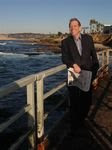BRIDGE FOR STRANDED SOULS
Believing we’re a bridge to Superman
we focus on our body, while our soul
lies stranded on the side where we began
to cross before we gave up on our goal.
With rawness of our feelings we revive
half-hearted rescue efforts to retrieve
our stranded souls, but since they’re not alive,
we lose with them the power to believe.
Inspired by Roberta Smith’s review of an exhibition at the Neue-Galerie, “Brücke: The Birth of Expressionism in Dresden and Berlin, 1905-1913,” (Guys Who Put Art in Party Animal,” NYT, February 27, 2009):
The original bad boys of 20th-century German art got together in June of 1905. They were nobodies: four young, restless architecture students in Dresden, the jewel of the Elbe. Partly inspired by the city’s many bridges, they called themselves the Brücke, or bridge. They felt it implied movement toward the future and away from the “older, well-established powers,” in the words of their unusually open-ended manifesto. They liked echoing Nietzsche, who described man as “a rope, fastened between animal and Superman.... a bridge and not a goal.” By the time the Brücke disbanded, in 1913, it had revived a rawness of feeling, form and execution that had been largely absent from European art since early medieval times. It had made a place for itself in the Modernist repertory, the creed of Expressionism, an art made directly from, by and for the self, unrestrained by affectations of polish, reason or classical beauty.
© 2009 Gershon Hepner 2/27/09
Saturday, February 28, 2009
Subscribe to:
Post Comments (Atom)


A beautiful poem with a mystical leaning apparent.
ReplyDelete